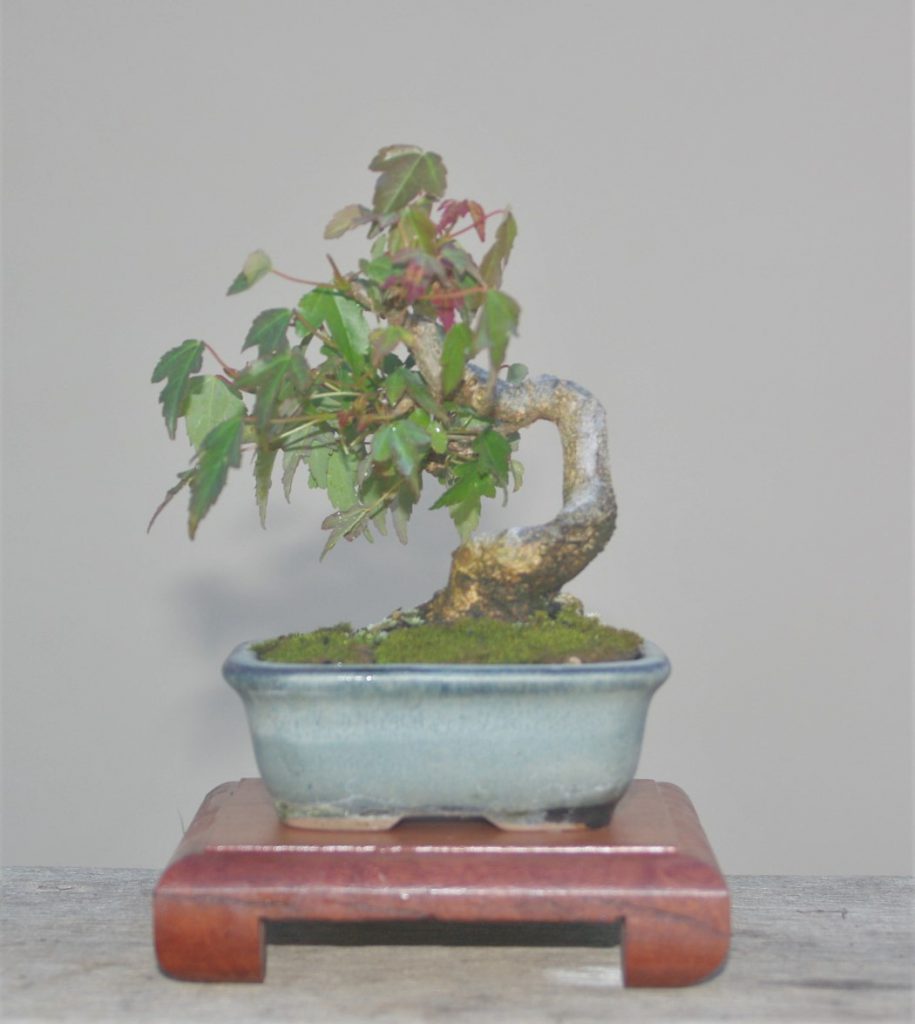In order to get you the best start for future bonsai Shibui Bonsai trees are root pruned quite hard when they are dug from the grow beds. This hard root prune promotes much better nebari and lots of new fine feeder roots so the trees will transition into bonsai pots far better when the time comes.
Continue readingFlowering bonsai
Spring is when the deciduous trees start to emerge from winter dormancy. Spring is also peak flowering time and it is great to have some flowering species in a bonsai collection to add variety at this time of year.
Continue readingRepotting 2020
Spring is well under way a bit earlier than usual at Shibui Bonsai. The Chinese elms are always the first to shoot and some have had green buds since July. Now many trident maples have joined in pushing out their tiny red buds.
All that movement means it is time to get on with repotting any trees that need it this season. I usually start with the smaller shohin sized bonsai. I have found from experience that these little trees do not do well over summer if they start with a pot full of roots. Repotting every spring has meant they stay healthy and alive.
Continue readingSpring
It has been a busy winter at Shibui Bonsai. Lots of seedlings have been posted off for you to start your own bonsai projects. The tridents have started to shoot now so seedlings will only be available for another week or so.
Continue readingTridents for root over rock bonsai
Trident maples make some of the best root over rock bonsai. The roots grow and thicken quite fast so we can get a good result in less time than most species. Read more about Shibui Bonsai methods to develop root over Rock trident maples.
Continue readingUse seedlings to add new roots
Nebari is the Japanese word that describes the roots we see on the surface. Those roots help us to see an older tree when we look at a bonsai so really good nebari is highly valued in bonsai.
Not all trees grow roots in all the right places. That can be frustrating for bonsai growers. An otherwise great bonsai is not quite as good because it lacks a few roots.
Continue readingBendy trunks for shohin maple bonsai
Lets face it. Straight bonsai trunks can be quite boring, especially on tiny shohin trees.
You can develop trunks with far more interest by wiring really small, flexible seedlings then growing them out to thicken the trunk.

Plaited trunks
Another technique that can create interesting texture in trident trunks is plaiting several seedlings together.
Plaiting does away with the need to tie the trunks together as the plaited trunks are already held firmly so they cannot push each other away.
Continue readingFused tridents
Many of us want thick trunks as quick as possible. Fusing tridents together is one way to achieve trunk girth.
Trees that are held tightly together while they grow will eventually fuse and merge together as the cambium layers unite. Eventually they will be grafted so well it can be hard to tell the trunk was once separate trees.
There are a number of different variations on fused trunks. Here I will look at just a couple that I have played with.
Continue readingBetter trident nebari
I have posted this technique before but to save you searching through old posts here it is again.
The principles of this technique are that most trees have the ability to grow new roots when circulation of sap is restricted. When the new roots emerge above the plate they are forced to grow out horizontally to the edges before diving deeper into the soil. This gives us a great start to a shallow, spreading nebari much prized in bonsai. As an added benefit, when trees rely solely on lateral roots the base of the trunk expands to give a buttressed trunk base which in turn gives your tree much better trunk taper. 2 great bonsai assets for the one simple technique.
Continue reading